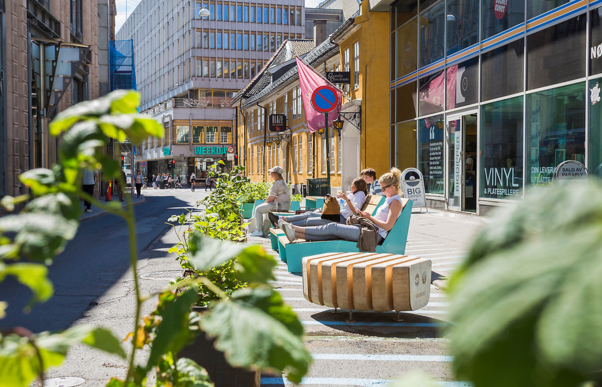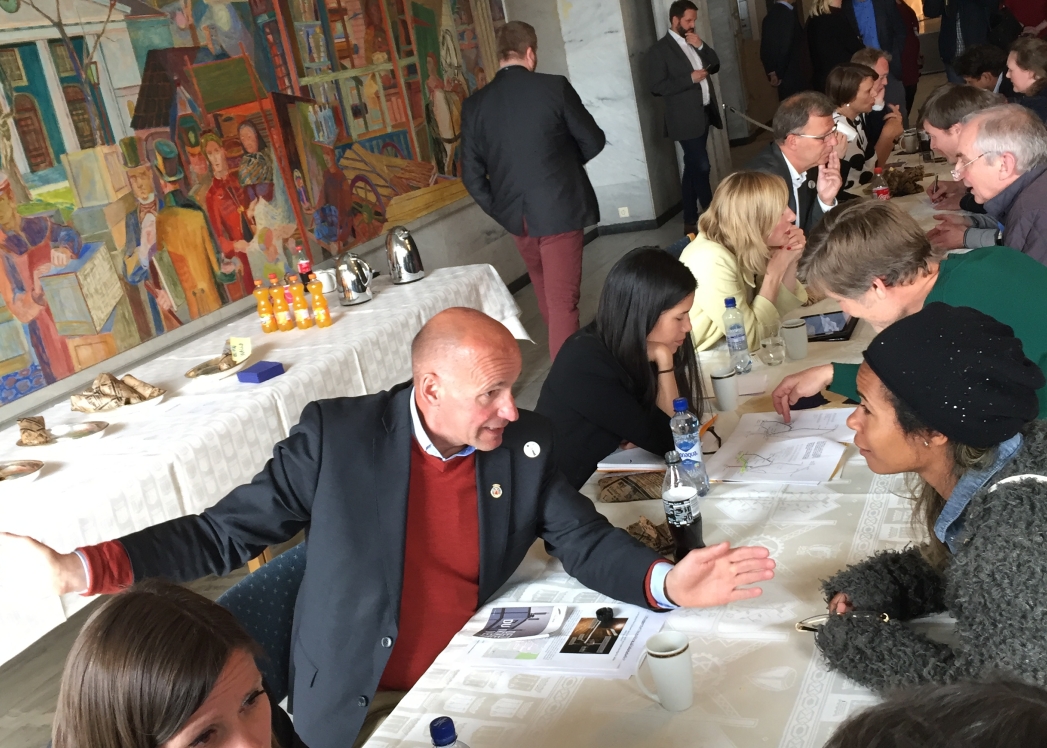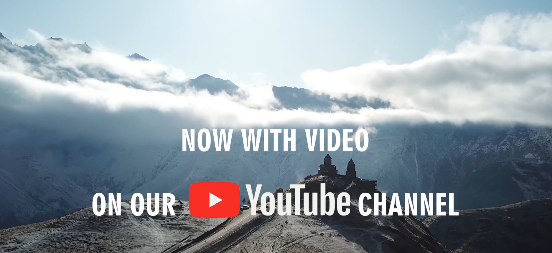 03.12.2020 (Caucasian Journal). ახლა უკვე ქართულად! Our interview with chief advisor to the Mayor of Oslo is now available in Georgian language. If you speak Georgian, you are welcome to visit Caucasian Journal's Georgian version here.
03.12.2020 (Caucasian Journal). ახლა უკვე ქართულად! Our interview with chief advisor to the Mayor of Oslo is now available in Georgian language. If you speak Georgian, you are welcome to visit Caucasian Journal's Georgian version here.For our readers who have missed the original English publication, we republish it below. It focuses on big city problems. This interview continues our program of interviews with high-level practitioners from Western Europe who share knowledge in areas most relevant to our region.
How quickly an industrial city can transform into a leader in environment protection and clean hi-tech? Which secret city management mechanisms are needed? How do citizens participate?
Raymond JOHANSEN, Governing Mayor of Oslo - European Green Capital 2019, kindly agreed to give interview to us, but due to COVID crisis it was postponed. We are thankful to Anita LINDAHL TROSDAHL, Project Manager of Oslo European Green Capital 2019 at the Mayor's Office, who proposed to answer most of our questions.
Read the Georgian language version here.
Alexander KAFFKA, editor-in-chief of CJ: In 2019 your city - Oslo - was awarded the title of Europe's Green Capital. Congratulations! Do you think that greening of Oslo is your most important achievement?
ANITA LINDAHL TROSDAHL: I am very proud of Oslo’s European Green Capital title. This is a result of a long-term effort from citizens, companies and public sector. I believe that politicians in Oslo have made many good decisions over two-three decades. Recently we continue to see good environmental results. The buses run more frequently, the car traffic is going down and the air is cleaner. Greenhouse gas emissions are going down, and investment are made to ensure that they continue to go down. In addition to green policies, I am very proud that Oslo is home to every fourth new green job created in Norway. A true sustainable city must be green, socially inclusive and economically viable.
 |
| Click to enlarge |
ALT: Norway is legally responsible for keeping in line with the EU air quality directive. The municipalities are the implementing body for many of the measures relating to air quality. In 2015 the EFTA Court ruled that Norway has failed to comply with its obligations. There’s not a punishment as such, but the Government has to step up its actions to improve the situation. Since 2015, the combined national and local efforts have helped to improve the air quality in Oslo significantly.
Norway is responsible vis-à-vis the EU/EFTA system, but the national law is applicable for all municipalities. Therefore Oslo is responsible to keep within the EU limits, but it will be Norway who has to answer to the EU/EFTA system is there is a breach. If Oslo’s air quality is getting too bad, the municipality breaks the law – but ultimately it is the state that has to answer for all breaches in Norway. Does that make sense?
AK: Yes, it does, thank you. Could you summarize what exactly does it mean to be a green capital? What was done to win this title?
ALT: The award is a great recognition of the long-term sustainability work that has been done in Oslo. It covers 12 different areas and Oslo has been assessed on present situation, the work the past 5-10 years and future plans. For example:
- Oslo has one of the most ambitious climate strategies in the world and has introduced a climate budget that constitutes the road map to achieving our climate goals.
- Oslo has reduced car traffic, while simultaneously strengthening public transport and facilitating walking and bicycling. We also have one of the largest markets for electric vehicles with almost 60% of all new cars sold being fully electric.
- Oslo has succeeded in transforming waste into resources through an innovative and effective recycling system.
- Oslo has enhanced people’s access to recreational areas, green spaces, rivers and the fjord.
- Oslo has preserved its nature and biodiversity, in and around the city centre, through decades of massive urban development.
- Oslo has reopened waterways as the city grew, enabling the city to better manage storm water in the wake of more frequent and heavier rainfall – measures that also provide people with new recreational areas and plants and animals with new habitats.
Our climate budget is a governance tool for transparency and accountability, and it can be used by all municipalities. We are now working to share this methodology with cities across the globe.
ALT: I know that we are fortunate in Oslo and Norway to have a sound and stable economy. However, not all measures are about investments, and I believe that it can also be economical to, for instance, use sewage and waste to create energy, to focus on energy efficient solutions to reduce energy costs, to change how we work with parks and plants in the city – less maintenance is better for insects, and saves costs. Our climate budget is a governance tool whereby we identify emissions, how much should be cut, by which agency and at which cost. This is a tool for transparency and accountability and it can be used by all municipalities. We are now working to share this methodology with cities across the globe.
 AK: Can you name three main driving forces needed to drastically improve the ecological situation? In the case of Oslo, what was the main stimulus - a really bad environment situation, or ecological consciousness of a new generation?
AK: Can you name three main driving forces needed to drastically improve the ecological situation? In the case of Oslo, what was the main stimulus - a really bad environment situation, or ecological consciousness of a new generation?ALT: I think there’s a mix of drivers. We need to keep improving the city in terms of accessibility for people, traffic management, improving the environmental situation in the harbour and rivers and so on. What we also now see is a call from the young generation and an increase in consciousness of the climate crisis. This paves the way for prioritizing climate and environmental measures even higher than before.
AK: “Clean air”, “clean energy” are trendy terms used by politicians worldwide to gain popularity. But sometimes the election is over, and there is no practical result. What are the options for the population in such a case? How can people make the decision-makers keep their promises? Or should they just wait till the next election?
ALT: I cannot speak for the politicians. But I believe that democratic elections combined with transparency of the government will help the citizens hold the politicians accountable. If the city operations are transparent and the press follows local policy developments the citizens can use their democratic rights to keeping politicians accountable to their promises. The Climate Budget for example gives transparency over targets and progress. If there’s no progress it is not possible to hide it.
AK: Let’s talk more about the citizen-government interaction. Does Oslo have any special mechanisms, or its own know-how, for improved interaction between the population and the city government? If yes, are they specific for Norway, or can be used elsewhere?
ALT: There are many different ways in which the citizens can interact with the City Government and City Council. Generally, there is a high degree of transparency. Most correspondence and documents in the municipality are publicly available online. City Council meetings are open and question hour is always streamed online. Citizen groups may ask to present before the relevant committee, which is dealing with a case. There are public hearings on the important plans. In the last revision of the Municipal Masterplan we tried new ways of engaging with the public. All citizens received an SMS with a link to the document and with an invitation to "speed-date-style" meetings with politicians. Also, there were local workshops in different city districts. This is an area where we constantly try to improve.
Citizens can raise any question at "speed dates" with Oslo city government including the Mayor. They get a few minutes with the one they wanted to talk to.
AK: "Speed-date-style" meetings with politicians - sounds quite innovative! Could you elaborate on this practice? Which level of politicians can be “invited for date” like that? What’s the efficiency of “speed dating with politicians”?
 ALT: Here is a photo of the speed-date session – all the members of the City Government, including the Governing Mayor – he is on the left side of the table. Citizens lined up to speak with them. They get a few minutes with the one they wanted to talk to, and sit on the right side of the table. They can raise any question they like.
ALT: Here is a photo of the speed-date session – all the members of the City Government, including the Governing Mayor – he is on the left side of the table. Citizens lined up to speak with them. They get a few minutes with the one they wanted to talk to, and sit on the right side of the table. They can raise any question they like.ALT: I don’t think we would normally call the police over a badly parked car. But fines in Norway are so high, that most people try to park correctly. For other matters we have an app called Bymelding (Cityreport), where citizens can make note of a specific location in a map, add a picture and a description if there are holes in the street, streetlights that are out, full waste containers, signposts that are broken, benches that are broken or dirty, trees that hinder the sight or passage and much more. This can then be reported to the right agency in the municipality and dealt with efficiently.
AK: Thank you - I just wanted to ask about the mobile apps available for Oslo inhabitants. Are there any other mobile tools for Norwegian citizens in general, which assist in proposing public initiatives, in reporting problems, or indirect voting?
ALT: The app mentioned above gives citizens an opportunity to report different problems. We also have an app that is called the “Oslo key” which gives access to recycling stations, libraries after opening hours etc. We do not have apps for voting or similar.
AK: We have heard about electric ferries, electric buses and cars, and restricted access of transport to the city center. Are there any other smart solutions, which you are especially proud of? Like delivery drones, or robotized taxi?
 ALT: We now have 76 electric buses in Oslo, 115 if you count the region, 2 electric ferries, and there’s a steady increase in sales of electric cars and vans. We are also testing autonomous (electric) buses, as we believe they can become an important supplement to our public transport system. The autonomous buses can drive its route without a driver (see photo; more information can be found here).
ALT: We now have 76 electric buses in Oslo, 115 if you count the region, 2 electric ferries, and there’s a steady increase in sales of electric cars and vans. We are also testing autonomous (electric) buses, as we believe they can become an important supplement to our public transport system. The autonomous buses can drive its route without a driver (see photo; more information can be found here).AK: Oslo is one of the world's most expensive cities. Did the greening process entail any additional costs for the people? Perhaps higher parking fees or utility bills? Or did life actually become cheaper?
ALT: Space is scarce in Oslo and every square meter is very expensive. Public space is a public good and it is therefore just to have rather expensive parking in areas where it is in public interest to reduce the number of cars. There has also been an increase in the fee to enter the toll-ring around Oslo. In return, people get better public transport and bicycle infrastructure and more space in the city for other activities, restaurants, playgrounds etc.
AK: How did your own life change, what differences you as a person feel, living and working in a green city? And if there is anything else you want to comment upon, and send a message to our readers, the floor is yours.
ALT: As a citizen, I enjoy the efficiency of the public transport system, the easy access to cultural life in the city as well as nature and recreational areas closeby. I can feel that the air is cleaner and I can go swimming even in the inner harbour. I think that if we manage to make the green choice the most convenient for people, they will prefer this choice no matter if they are convinced of the cause or not. It doesn’t matter why people make a green choice as long as it spurs the right action.
AK: Thank you for your excellent insights!




No comments:
Post a Comment